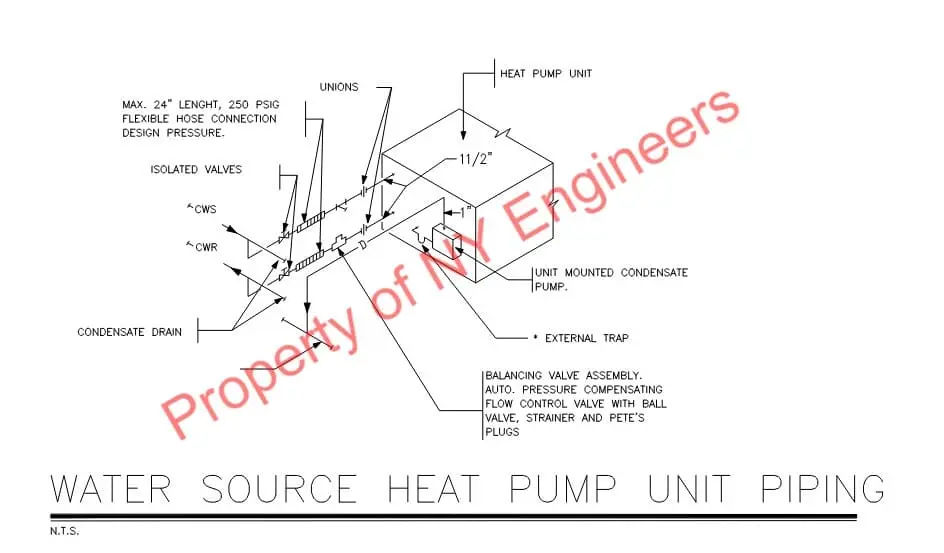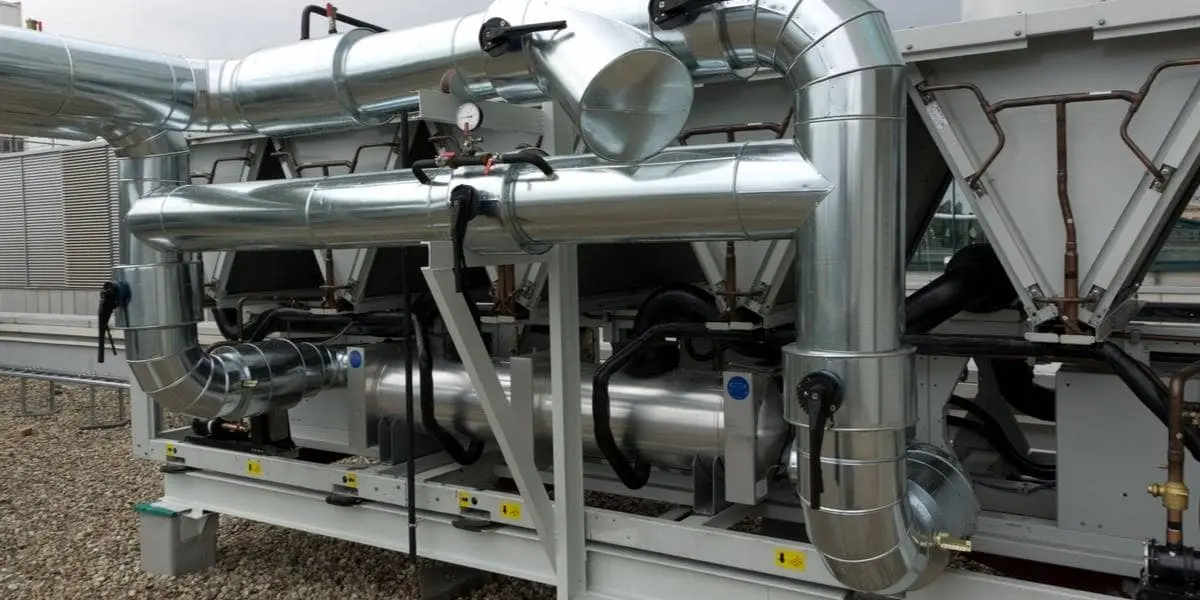We make sure that the design we make for your water cooled HVAC system is in line with your design brief and specifications.
Our NYE designers aren’t just focused on the accuracy of your design. They also make sure to come up with a highly energy-efficient system just for you.
We understand that such a system is a major investment, which is why our design also focuses on superior durability and longevity.
 Click to view PDF in detail
Click to view PDF in detail
A water cooled HVAC system is widely used in a lot of buildings, whether residential or commercial, as it rejects heat absorbed by the evaporator’s refrigerant.
Here at Nearby Engineers New York Engineers , we understand how complicated a water cooled HVAC system design can be, not to mention there are several considerations to make when it comes to compliance with energy regulations and building codes.
However, our expert engineers and designers are experienced in the field of MEP and BIM, so we can assure to deliver only the best water cooled HVAC system designs based on our clients’ exact specifications.
We are one of the fastest growing MEP design firms in the construction industry. We pride ourselves on having a fast turnaround while providing cost effective solutions. We are licensed in 50 states and are your one stop shop for all MEP design needs.
We are licensed in all 50 states!
We design to the perfection
Enjoy our lightening fast turnaround
We have completed so far!
Our designs are approved by DOB in one go
The best service experience in the market

Water cooled systems can be considered superior to their air cooled counterparts since they can run at lower condensing temperatures. This is because water comes with higher specific heat than air.
However, water cooled systems are rarely used in residential installations due to their higher equipment cost, high maintenance requirements, and high installation costs.
Here at Nearby Engineers New York Engineers , we provide water cooled HVAC system designs for each of the three types of water cooled systems. They’re as follows:
1. Shell and Coil : This design comes with a shell that contains a copper coil. Water will flow via the coil in order to cool the hot gas refrigerant which is located in the shell. Hot air is often fed from the top which then condenses upon flowing down and getting in contact with the coil. After that, it’s then cooled down further at the bottom, thereby reaching a subcooling state.
In this design, however, minerals which accumulated on the coil can’t be cleaned mechanically. The only means to do so is by using chemicals for flushing them out.
2. Tube-within-a-Tube : The tube-within-a-tube design has an inner tube inserted to a larger outer tube. This design is widely used in most buildings as it’s very easy to manufacture.
In this design, water flows through the inner tube, cooling the refrigerant which flows in the outer tube. Alternatively, we at Nearby Engineers New York Engineers can design the inner tube with a grooved design to further increase heat transfer between the water and the refrigerant.
3. Shell and Tube : Lastly, the shell and tube type comes with a steel shell containing a lot of copper tubes inside. However, due to the relatively high cost it entails, it’s mainly used only in AC systems with higher capacity. In fact, only a few of our clients actually prefer having this design due to its costs.
In recent years, water cooled systems have experienced a considerable rise in their usage, mainly among small business and residential applications. Some the reasons why they’re being used are as follows:
We understand that water cooled systems play an important role in your building’s heating, cooling, and ventilation. Due to that, we make sure that during the design process, we can create a foolproof design and try to get rid of any issues and complications before we can call it final.
If you’re interested, here is how we proceed with our design service:
Design Brief : Upon contacting us for your design needs, we will discuss with you the specifics of the project. In this stage, we encourage you to provide us with your full design brief with all the details ready. We’ll also inquire about your current budget, your type of building, and other important requirements.
Site Inspection : After we are able to gather all the necessary information regarding your design, we will then conduct a site inspection. This is to ensure that we can get the exact measurements of your building. Doing so will allow us to accurately scale the design in accordance with your building’s dimensions.
We will send our inspection team to do this. They’ll also ask some important questions with regard to your construction project.
Designing : The design process will commence once we’re able to gather all of the necessary information regarding your design, i.e. design brief, site inspection, etc. During the designing stage, we will gather our team of experienced designers and engineers, particularly those who are experts in creating a water cooled system design.
After that, we will provide them with all the information and design brief so they can carry out the entire process seamlessly. Since our team uses only the latest tools designed for the BIM industry, we are confident that we can give you a high-quality design for your water cooled system.
Initial Feedback and Collaboration : Once our team of designers comes up with an initial blueprint, we will then show it to you. We will also conduct team collaboration, so we can correct any possible issues and flaws that might be present.
During this stage, we will try to tackle any errors and perform any adjustments and revisions where possible. By doing this, we can get rid of any flaws and create a thorough 3D presentation, so you can have a glimpse of what the system will look like once you have it manufactured.
Upon receiving your initial feedback, we will then make the appropriate changes as soon as possible.
Finalization : If you are satisfied with the revisions and adjustments, we will then send you the final design. The design you receive will be deemed final with all the necessary revisions performed. Since we’ve already done several water cooled system design projects before, we are confident that our final design will be infallible.
If you’re still hesitant about having a custom water cooled system design, then these reasons might just change your mind:
382 NE 191st St , Suite 49674
Miami, Florida 33179276 5th Avenue, Suite 704 #904
New York, NY 10001